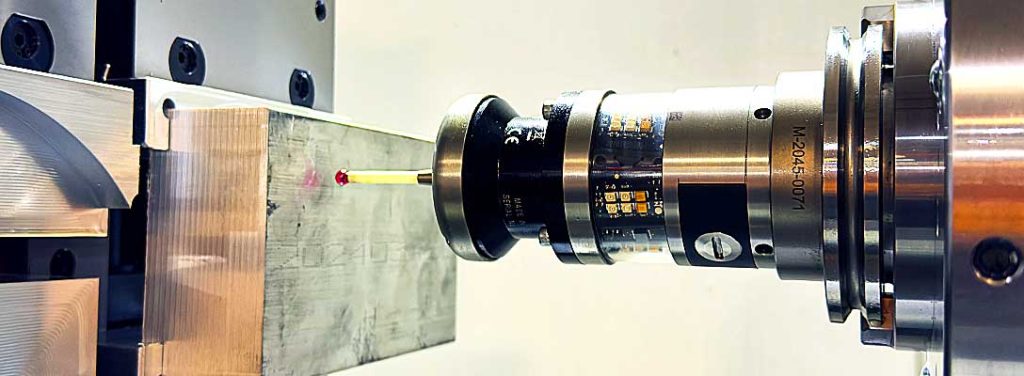
Horizontal Milling
Horizontal Mill
Horizontal mills are equipped with a horizontally aligned spindle that is parallel to the workspace. The rotating spindle contains the cutting tool that can move horizontally and vertically to cut away the material, forming it into the desired shape. The mill also has the ability to create holes, slots, and other details that may be required. Horizontal mills are the ideal for machining complex projects, durable and heavy materials, or heavy tooling.
Horizontal vs. Vertical Milling
Horizontal mills differ from vertical mills primarily in tool orientation and cutting capabilities. They have thicker and shorter cutting tools, ideal for handling and cutting heavier and deeper grooves, making it well-suited for dense metals and intricate shapes.
Benefits to Horizontal Milling
Efficiency & Performance
With the addition of a rotary table, loading and unloading parts on one side while machining continues on the other is seamless. This maximizes efficiency, reduces lead times, and ensures high productivity. Fast and precise horizontal mills are ready to take on the most challenging projects.
Capacity
Ability to handle large and heavy, or small workpieces with a high material removal rate. Horizontal mills are extremely efficient and can quickly remove large amounts of material, suiting them perfectly for heavy-duty machining.
Horizontal Mills may be equipped with pallet changing systems, allowing for the setup of multiple workpieces or fixtures while one is in the process of being cut. This helps to streamline production while minimizing setup and down times.
Perfect for large-scale production runs because of their efficiency and strength. Due to high spindle speeds and pallet changing systems, horizontal mills can cut and switch between workpieces rather quickly.
Versatility
Can be used with a wide variety of cutting tools and speeds
Ease
The horizontal mill is built to handle large or small production runs. It can cut and handle most heavy and durable of materials with ease and efficiency.
Precision
Horizontal mills reduce the risk of error by providing precise computer-controlled cuts and tight geometric tolerances.
Speed
Improved chip evacuation: Horizontal mills allow for chips to fall away naturally (thanks to some help from gravity) reducing buildup and heat, while improving tool life. Their horizontal spindle orientation allows for efficient chip evacuation. The risk of buildup, tool damage, and chip recutting is reduced significantly.
CNC Milling Capabilities
Milling is a precision machining process that removes material using a rotating cutting tool. Unlike CNC turning, where the material rotates, milling keeps the workpiece stationary while the cutting tool moves to shape it.
Milling is a precision machining process that removes material using a rotating cutting tool. Unlike CNC turning, where the material rotates,